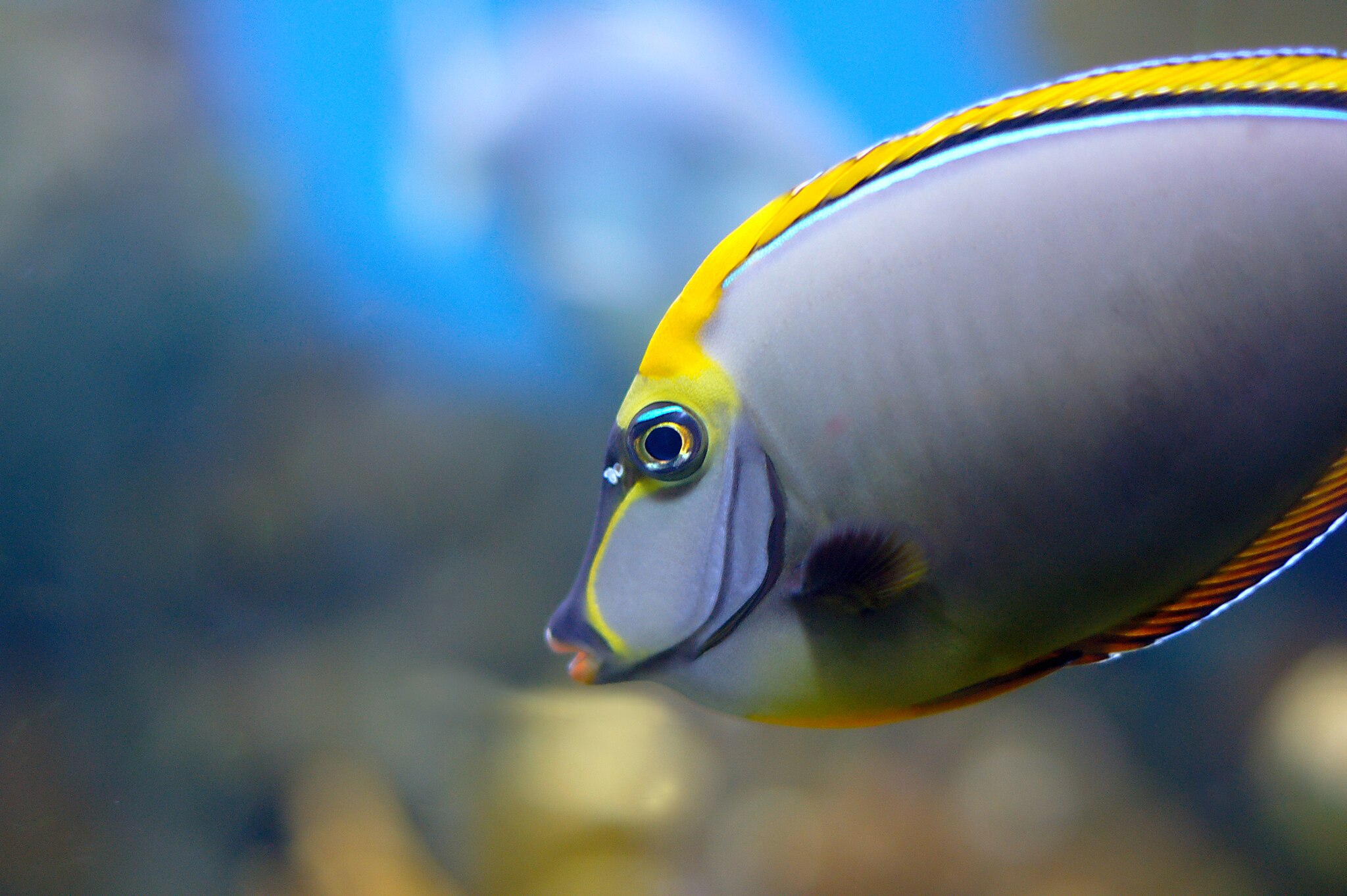List your top ten favorite tangs and the Lipstick tang will probably feature high on that list. Also known as the Orangespine unicornfish, or simply the Naso tang, Naso lituratus is a reef aquarium favorite known for its yellow face paint and orange lipstick as well as its graceful swimming and activity. Their large size makes them an eye-catching specimen fish for the reef aquarium, when other such large fish like Angelfish, aren’t always suitable. They are widely available, and their price is reasonable too.
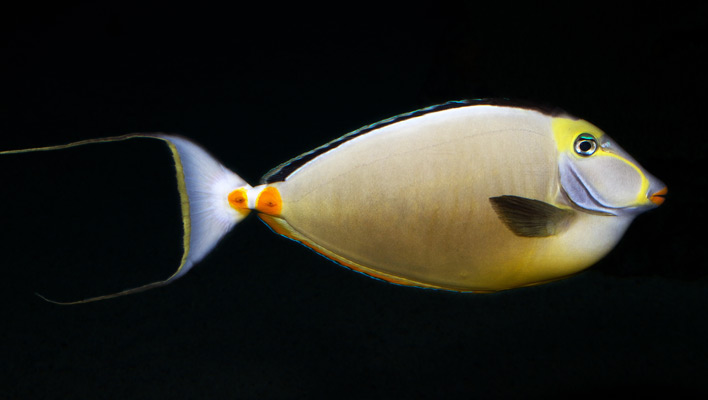
We actually have two Orangespines in the hobby, Naso lituratus, with its black dorsal stripe, which hails from the Indo-Pacific, and Naso elegans with a yellow dorsal, from the Indian Ocean and the Red Sea. N.elegans is known as the Blonde Naso because of that yellow dorsal, but apart from that the two species are very similar, grow to the same size, and can be kept in exactly the same way.
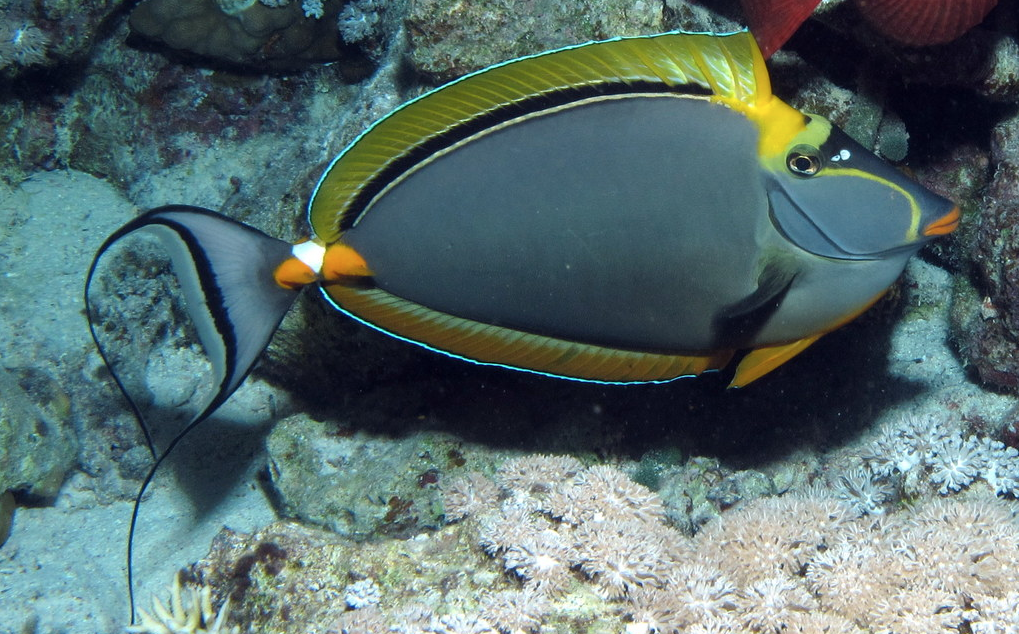
As surgeonfish go, the Lipstick tang is very peaceful, rarely becoming territorial towards other grazers or even its own kind, and many reef stores keep them together in large holding tanks when young. Their lack of aggression makes them an easy choice when combined with Acanthurus or Zebrasoma species, although large specimens display the four defensive orange spines on the caudal peduncle which give them their name. They are easy to feed, relatively hardy, and don’t suffer from Ich as much as Powder Blue and Achilles tangs do. The only problem with these otherwise perfect reef tank species is their size.
In the wild, both N.lituratus and elegans can and do grow to 18”/45cm in length, and that combined with their activity means that they need a large tank long term. A six-foot tank is often recommended as the minimum for a Lipstick, but when you place an 8” specimen even in an eight-foot long tank and it paces up and down, and using every inch of it, you’ll see the issue. Give them a 12’ tank and they’ll use that too, and longer. We haven’t seen one grow to 18” long in a home aquarium yet, but that probably means that we are stunting them, and they are actually quite small members of a genus of large fish, capable of lengthy ocean travel.
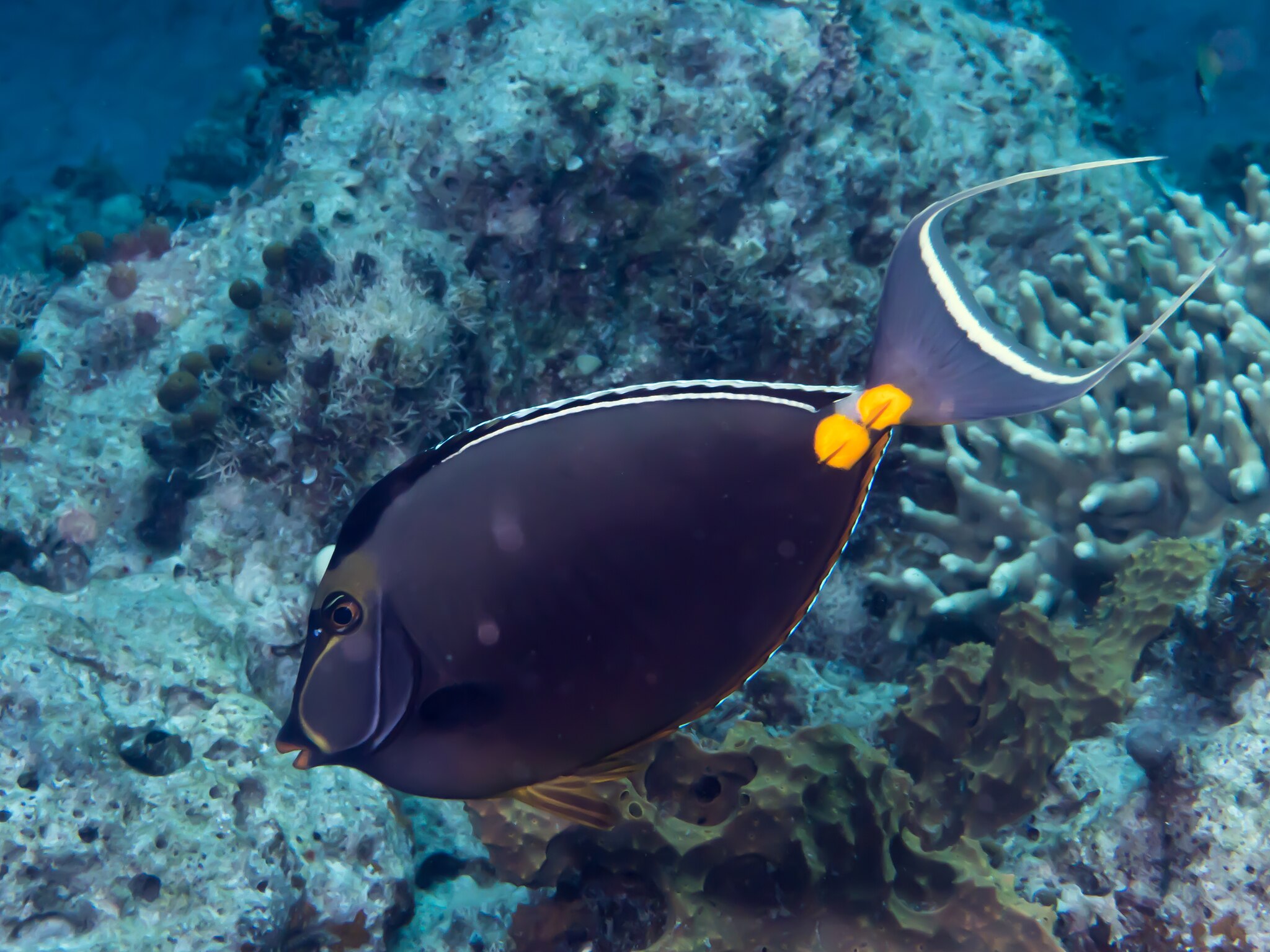
Streamers
Blonde Naso are coveted slightly more than standard Orangespines right now, but mature male specimens of both, sporting caudal fin extensions or “streamers,” are the most sought after. All Nasos should be quarantined and treated for flukes, as those large flanks can still attract parasites. Avoid very small specimens, especially small fish with large eyes, as it means that they haven’t grown as they should. And although peaceful, mature adults can have flare-ups with conspecifics in cramped tanks. If only they stayed smaller.
In the wild, they glide around between 5-30m depth and feed on benthic algae. In the aquarium they are much more zooplankton eaters, accepting krill, mysis, artemia, flake, and pellet foods, rarely stopping swimming to graze rocks. Lipsticks should not be added as an algae grazing solution. If you have a really big reef tank then either Lipstick tang would be suitable, and if you find one with the tail extensions they look even better.
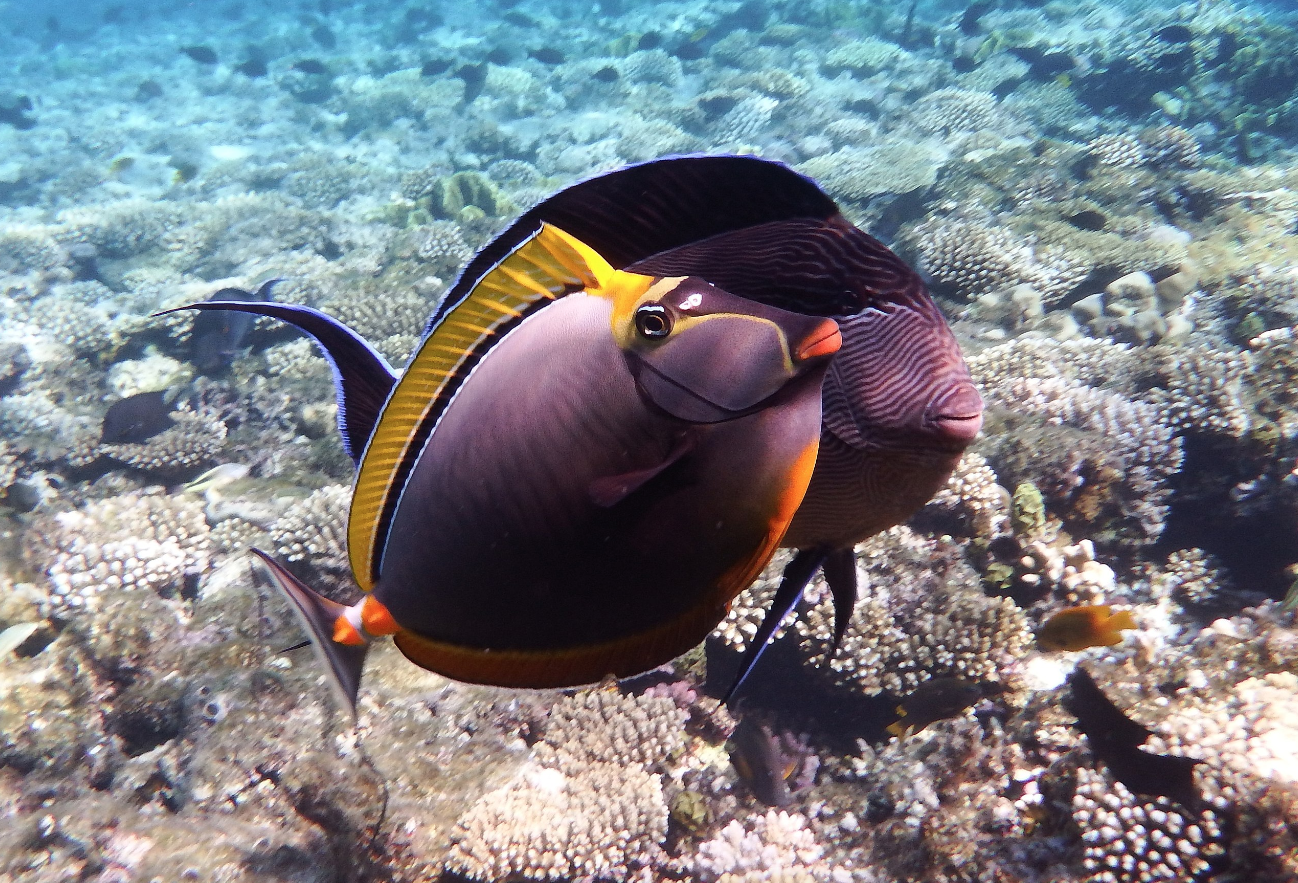
We are often asked which tang we would choose out of a Lipstick and a Sohal – both 18” potential specimen fish. But Acanthurus sohal has the ability to become a highly territorial fish, capable of spoiling the life of any other grazer in your tank, whereas a Lipstick and its large size are more likely to bring peace to a tank than aggression. They just require really long tanks and lots of swimming space long term.
Image credits
Top to bottom, MathieuTTL, CC BY-SA 3.0, Reef Builders, Derek Keats from Johannesburg, South Africa, CC BY 2.0, Rickard Zerpe, CC BY 2.0, Kora27, CC BY-SA 4.0


